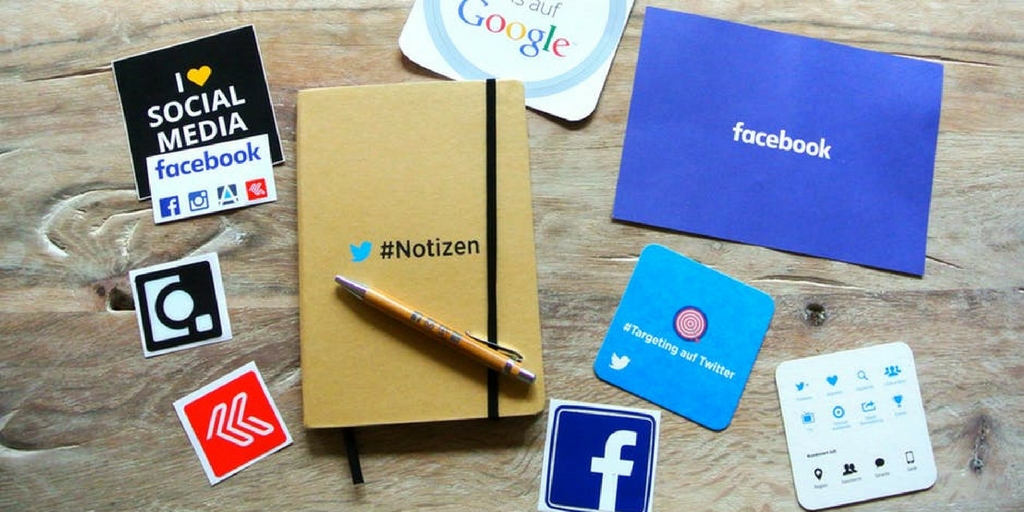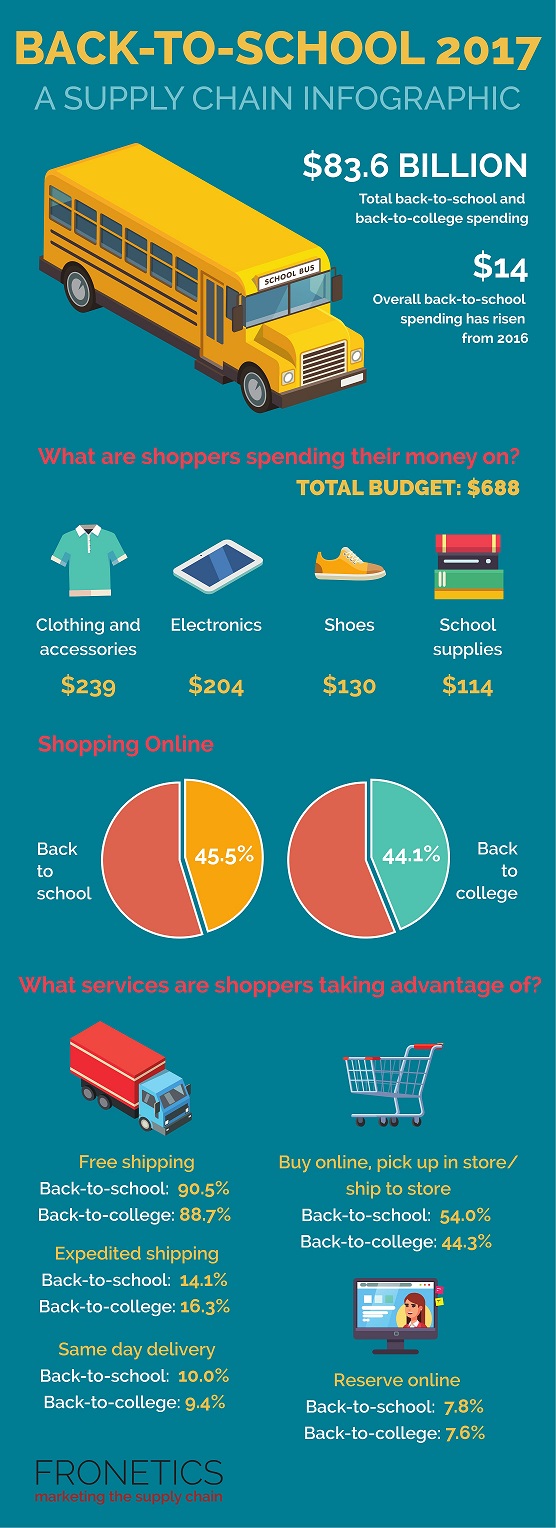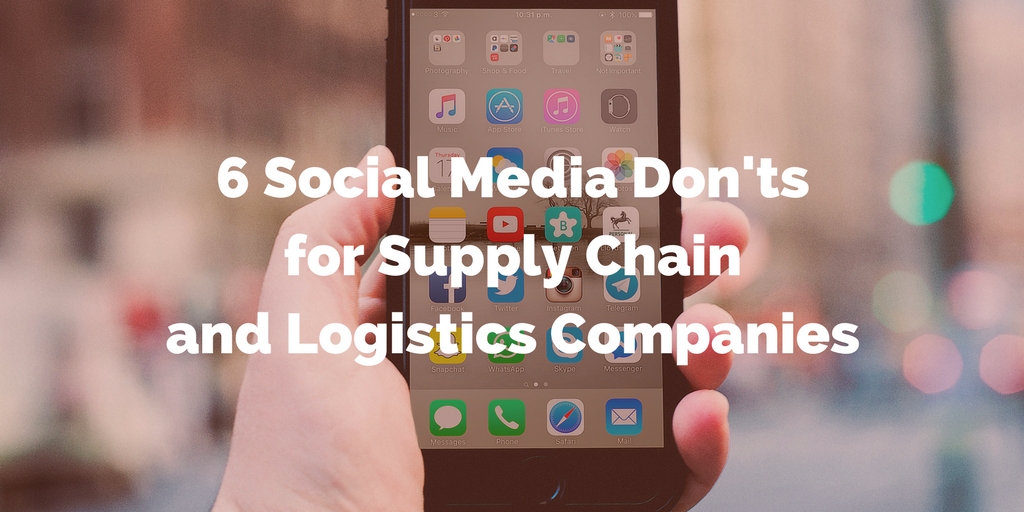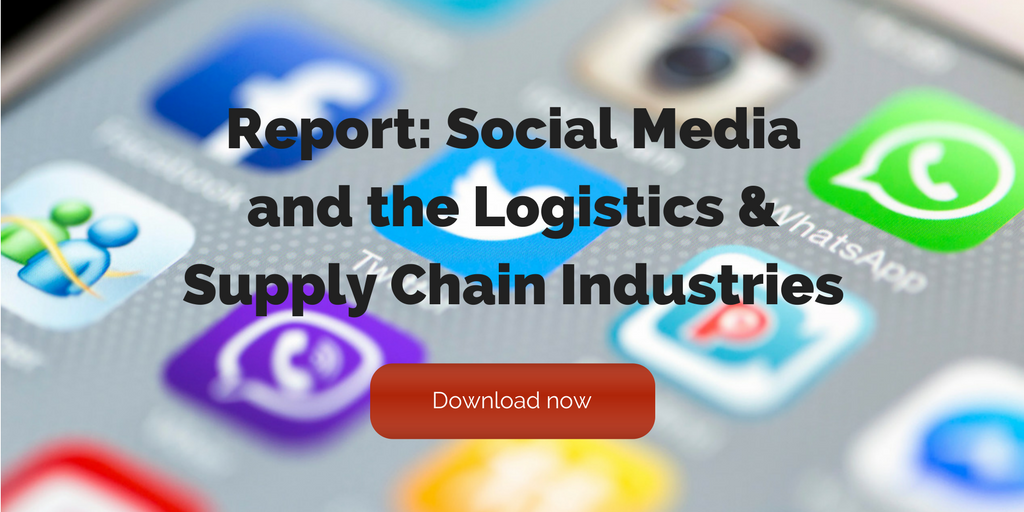
by Fronetics | Sep 5, 2017 | Blog, Content Marketing, Marketing, Social Media
Use Quora to answer potential customers’ questions, and they’ll perceive you as a valuable source of knowledge and an industry thought leader.
Despite gaining popularity over the last several years, Quora’s potential as a marketing tool for supply chain and logistics companies remains largely untapped.
In case you haven’t jumped on the bandwagon yet, Quora touts itself as “a place to share knowledge and better understand the world.” It’s a simple premise, but one that’s been highly effective since its founding in 2009: “It’s a platform to ask questions and connect with people who contribute unique insights and quality answers.” Essentially, the site is a community-generated question-and-answer forum.
How does Quora work?
Anyone can ask or answer questions on Quora. A key feature of the site is voting feature: community members vote on which answers are most helpful, boosting those responders’ visibility and credibility. A few other things the site allows you to do:
- Target your question to specific users;
- Publish content (much like LinkedIn’s publishing platform);
- Search for questions or topics relevant to your business, and follow these keywords to get notifications of new questions.
You might already be starting to see the exciting potential in this social media platform. But let’s talk about three specific ways you can use Quora to build your brand, generate leads, and engage with your potential buyers.
3 ways supply chain and logistics marketers can use Quora
1) Research
Using Quora is about gaining and spreading knowledge. Your peers and competitors might be talking about their new projects with an audience that’s actively offering feedback on what it wants or doesn’t want. Before even jumping in with your own content, just staying attuned to the conversation can be a valuable resource as your business builds its marketing strategy.
2) Building and maintaining connections
Relationship-building is a key benefit of using Quora. While sites like LinkedIn and Twitter are valuable for quicker engagement, Quora offers a forum for substantive conversations, a crucial building block for lasting buyer engagement.
The site also offers a great opportunity to reach beyond your normal sphere. Emma MacAnnally of Torchlight suggests: “Don’t be afraid to ask questions and engage in conversations with others you respect and admire.” She points out that doing this will broaden your audience, offer new insights, and give you recognition with thought leaders in your field. “Networking can happen anywhere,” she says.
3) Reputation building
Quora offers you the ability to run a quick search of your business’ name, and tune in to what’s being said about your brand. Also, by answering others’ questions with substantive, reliable content, you can become a resource for potential buyers, as well as others in the industry.
Your business is more than its product. You can offer your audience valuable knowledge. Quora gives you a direct way to answer the questions that your potential buyers are asking, building your reputation as a resource for knowledge and as an industry thought leader.
Related posts:


by Fronetics | Aug 31, 2017 | Blog, Marketing, Strategy, Supply Chain
As B2B buyers expect customized sales experiences, sellers can use these 3 tips to offer personalization at scale.
One of today’s biggest challenges facing B2B sellers is the increasing expectation of personalization as part of the buying experience. The seller’s task of offering personal experiences for all leads is a daunting one, particularly with limited time and marketing budgets.
As companies become increasingly focused on risk-mitigation in the buying process, they are far more inclined to trust vendors who can demonstrate that they understand and can address their specific needs and risk factors. According to Demand Gen Report’s 7th Annual B2B Buyer’s Survey, 89% of respondents stated that winning vendors “provided content that made it easier to show ROI and/or build a business case for the purchase.”
While the task of personalization may be daunting, it’s not impossible. And it’s certainly worth the effort. Here are three strategies your business can use to personalize sales pitches and make your marketing dollars work more efficiently.
3 ways to offer personalization at scale
1) Target smarter
We all know that social media platforms offer a wealth of demographic information. One of the most valuable insights it offers is intent signals: things like job changes, social posts, and hiring patterns, all of which can help your sales team identify the right time and strategy for reaching out to a potential buyer. You can use social media features built into the platforms themselves, like advanced filters and lead bots, to identify qualified leads.
Beyond identifying leads, smart targeting involves well-written and targeted online ads. According to Demand Gen’s report, “Online ads are shaping early behaviors and opinions of B2B buyers. 63% of respondents said they noticed ads from the solution provider they chose during the research phase.”
2) Demonstrate your understanding
Justin Shriber, vice president of marketing for LinkedIn sales and marketing solutions, reports that “80% of buyers don’t believe that the salespeople they deal with understand their business.” Most of this perception, Shriber says, is driven by the way salespeople converse with potential buyers. Using generic openers, and talking more than listening, reinforces this negative perception.
Set yourself apart by making sure that your opener lets the potential buyer know that you are paying attention to his/her particular needs and challenges. Make use of the information you’ve gleaned from social media to open the conversation by addressing a need or question the prospect has recently voiced.
3) Engage more closely
An important aspect of the personalization B2B buyers and consumers alike have come to expect is ongoing engagement. “When sales professionals are unable to provide ongoing value,” says Shriber, “the buyer feels no obligation to maintain a dialogue.” Continuing the conversation throughout the buying cycle is key to keeping the potential buyer invested. In addition, the most effective sellers use technology like email tracking and PointDrive to gauge whether the information they’re sharing is hitting the target. These technologies provide sales professionals with a feedback loop that they, in turn, can use to tailor future interactions.
Related posts:


by Fronetics | Aug 29, 2017 | Blog, Content Marketing, Current Events, Marketing, Social Media
When it comes to social media news in August 2017, the words of Kanye West, “stronger, better, faster, stronger,” have never been truer.
August has seen a continued push to get more information to more people in real time. Pinterest is introducing mobile ads. YouTube is adding sharing and chat features to the app. Google is developing new software to rival Snapchat. And, of course, the social media giant Facebook is always working on new improvements to dominate its competitors.
Facebook Tests Custom Audiences Based on Interactions with Event Pages
Brands will soon have the ability to create custom audience groups based on visitors’ interactions with the brand’s event pages. Facebook has confirmed that brands will be able to choose custom audiences made up of users who responded to any event on their pages or to specific events, and they will also be able to include users who RSVPed as going, interested, or both. Though only in its testing phase, these initial companies have been able to create audience groups based on interactions within the past 180 days.
Google Developing Rival to Snapchat Discover Feature
Back in 2016, Snapchat introduced ‘Discover,’ which allowed users to view news in the form of Snapchat Stories. At the time, this new technology allowed social media to combine news and television in short videos. Now Google wants a piece of the action. Google is working to allow publishers the ability to create media-oriented content. “The new publisher technology, called ‘Stamp,’ represents an escalation in the competition between tech platforms for publisher partnerships and access to media content, which they need to drive user engagement,” writes Erik Sass for Media Post.
Pinterest Rolls Out Mobile Video Ads to All Advertisers
Initially introduced a year ago to a limited amount of Pinterest advertisers, now all advertisers will have the ability to create mobile video ads. Using auto-play, the new type of promoted videos will begin playing as soon as users scroll across a brand’s feed and will also auto-play in Pinterest’s search results. Jenny Chiu, head of partnerships at Pinterest, said in a blog post, “Your Promoted Video sparks into action the moment a Pinner scrolls across it in their feed — no need to hit play. They can just sit back and watch your video unfold. And unlike on other platforms, where ads interrupt people as they’re trying to enjoy posts from friends, on Pinterest, people are actually looking for videos that inspire them to give ideas a try.”
Twitter Tests New Feature that Allows Brands to Automate Their Promotional Tweets
Twitter is in the initial testing of having brands pay ($99) to have their tweets automatically promoted on its app. Brands can tweet as they normally would, and the social network will automatically promote some of those tweets, but brands cannot customize which tweets are promoted. Twitter will create bi-weekly reports that will include information on audience insights, user growth and new user engagement. Companies were able to sign up on Twitter’s homepage to try to land a spot in the beta testing, which is now completely full. Stay tuned to see if Twitter rolls out this new feature to all users.
LinkedIn Rolls Out Quick Access to Samsung Users
LinkedIn and Samsung have teamed up to create the ultimate user experience. Now Samsung Galaxy S8 and S8+ owners can have access to LinkedIn’s content and calendar experience. Using Bixby, Samsung’s digital assistant, users can easily access LinkedIn’s Trending Storylines that include top news stories and scheduling details through My Schedule notifications.
YouTube Adds Chat and Sharing Features to Mobile App
YouTube has been working on ways to make sharing videos easier than ever. With the newest app features, users can share videos directly through the mobile app, as well as chat with other viewers in real time. YouTube announced on its blog, “Not only can you share and receive videos in the app, you can also chat about them right on YouTube, reply with another video, invite others to the conversation, and more. We think it’ll make sharing easier, faster and more fun on your phone. And if you want to continue sharing videos through other apps, you can still do that too.”
Related posts:


by Fronetics | Aug 28, 2017 | Blog, Current Events, Supply Chain
Record spending, online shopping, and free shipping are hallmarks of back to school 2017.
With consumer confidence on the rise, the National Retail Federation predicts that back-to-college and back-to-school spending will hit $83.6 billion in 2017. That whopping total is an all-time high for back-to-college dollars, and the second highest on record for back-to-school spending, and represents and increase of more than 10% from last year.
If you started your shopping three weeks to one month before school starts, you likely found the longest lines: 46.7% of shoppers report that that’s when they planned to hit the shelves for back-to-school shopping, and 34.6% for back-to-college.
The top destinations for back-to-school shoppers are department stores (57.1%), discount stores (54.1%), and clothing stores (46.0%), while back-to-college shoppers prefer online shopping (44.1%), with discount stores (40%) and department stores (38.5%) following in second and third place. A whopping 90.5% of back-to-school shoppers plan to take advantage of free shipping services, with 88.7% doing the same for back-to-college shipping.
Per household, overall back-to-school spending has risen from last year’s average of $674 to $688 in 2017. The NRF predicts that 64% of that total will be spent on apparel and electronics.
Check out our infographic with some interesting facts from the NRF’s 2017 survey below.
Back to school 2017 supply chain infographic

(Made with Canva)
Related posts:


by Fronetics | Aug 23, 2017 | Blog, Content Marketing, Marketing, Social Media
In keeping with social media etiquette for businesses, you really shouldn’t do these things.
It’s easy to get bombarded with suggestions on how to interact with your customer base on social media. Amid the endless barrage of ideas for what to do, it’s worth remembering that not all social media engagement is equal — sometimes, it’s just as important to remember what not to do. (See for example #LeggingsGate.)
Let’s talk about the specifics of keeping your proverbial foot out of your business’ mouth online. Take a look at the list below of 6 don’ts for B2B businesses.
6 social media don’ts
1) Don’t assume that just because you’re online, offline rules of communication and conduct don’t apply.
It may seem obvious, but it’s all-too-often forgotten. This is a good rule, and an easy metric by which to judge any content before posting: Your interactions online should measure up to professional interactions you would have in person.
2) Don’t re-post, re-tweet, re-gram, or re-share external content without a thorough check first.
Re-posting content that’s of interest to your business’ audience is a great way to promote discussion and engagement. But don’t get sloppy. Remember that even if content didn’t start with you, if it’s posted on your company’s social media accounts, it represents your business. Make sure content is well-researched and from reliable sources. Want to re-post something controversial? Just be sure to include a disclaimer or explanation in your post.
3) Don’t forget that emotional intelligence is just as important for businesses as for individuals.
Never forget that behind every social media account is a human being. The bottom line: “bring emotional intelligence to your social media management. Take the time to address any issues with compassion and understanding.”
4) Don’t ignore comments.
Social media is all about engagement with your audience and potential customer base. Yes, responding to every comment takes time and resources, but it is well worth the effort. A comment ignored sends the message that you don’t feel that your customer’s question, concern, or observation is important. Use comments as the opportunity they are to interact with your followers, and show them that you are ready and willing to address any issues they may have.
5) Don’t delete negative comments.
Once it’s online, trust that people have seen it. Deleting a complaint will only make your business appear insensitive and evasive. Addressing negative comments demonstrates that your company is proactive about resolving issues and taking care of your customers.
6) Don’t forget the basic principals of common sense and good judgment.
This one comes from John P. David of David PR Group. It seems like another obvious one, but people and businesses violate this principle all the time. Always have at least two pairs of eyes on everything you are going to post, and anything remotely controversial should be thoroughly vetted by as many people as necessary. When in doubt, David says, don’t post.
If your company has committed any of these social media don’ts in the past, don’t panic. These platforms offer an ideal place for renewing and tweaking your image. Invest in the creation of a good social media policy. Don’t give the enormously important task of social media management to a summer intern. And, for goodness’ sakes, remember you’re a human talking to other humans.
Related posts:












